
Yesterday I watched Parasite (2019). I had it on my mind ever since the whole buzz created in the media from the Golden Globe Gala.
To make an idea of how the critics in the industry appreciated the movie, they won 193 prizes and were nominated for another 308. Among them we can mention:

- Best Original Screenplay
- Oscar for Best-Picture
- Best International Feature Film and
- The 1st non-English language film to win for Outstanding Performance by a Cast in a Motion Picture. All are listed here for those passionate.
The movie explores every available analogy on the ladder of class aspirationalism. It starts in the half-basement apartment of the Kim family, the type of apartments that are distinctively Korean spaces in urban centers like Seoul.
The home is an architectural purgatory that just meets the threshold of acceptable living and a fitting reflection of their psychological states: low, but still hopeful. The whole story takes you into a journey between two worlds that are polarized, yet interdependent at the same time.
Here are the highlights I noticed. There’s probably many more out there that you might have noticed, so feel free to add them to the list.
15 ANALOGIES IN THE MOVIE AND THE MEANING BEHIND.
- THE NAMES & THE AMERICAN CULTURE PARADIGM
- THE KIM’S HOME & SOCIAL STATUS
- THE PARASITE IDEA – THE WI-FI SCENE
- THE PARASITE IDEA – THE DISINSECTION SCECE
- THE PIZZA SCENE & BRAND DISCREPANCY
- THE RICH & SUPERFICIAL CLICHE
- LINES & BORDERS TO HIGHLIGHT THE SOCIAL GAP
- STAIRS TO HIGHLIGHT THE SOCIETY’S LAYERS9.
- THE PAINTING – THE PERCEPTION of REALITY SEEN BY DIFFERENT SOCIAL CLASSES.
- THE PARASITE PARADOX
- THE SMELL TRANSLATED INTO POVERTY
- THE MISFIT CROSSING THE LINE
- THE PARASITE CIRCUIT
- 1st CLASS PRIORITY
- IT’S ALL ABOUT HAVING A PLAN
As a short intro, the movie was directed around two families: The KIM Family, representing the poor & The PARK Family representing the rich.
1. Their NAMES & the AMERICAN CULTURE paradigm.
- It starts with their names. While the poor have a basic Korean name, the rich have an American name that highlights the social distance between them.
- American culture is embraced in the movie by the rich as a sign of wealth and social status. It portraits the culture as the superior race and you can see it in all the scene where everything that comes from America it isn’t questioned when it comes to quality or education matters.




2. The KIM family’s HOME — SOCIAL STATUS.
- The Kim family living in a semi-basement apartment shows their overall financial conditions and social status: living at the bottom of society.
- The socks hanging at the level where other people are walking on the streets reinforce the message that they are actually even worse than most of the poor.


Another analogy about the family’s status is on the bathroom’s scene where the kids are looking for wi-fi signal. If you consider that the level of the toilet is set to be above the kids, you get the message.
3. The PARASITE idea —THE WI-FI SCENE.
- The parasite idea it’s right there from the beginning. Both of the kids are struggling to “get” some wi-fi signal from their neighbors above.
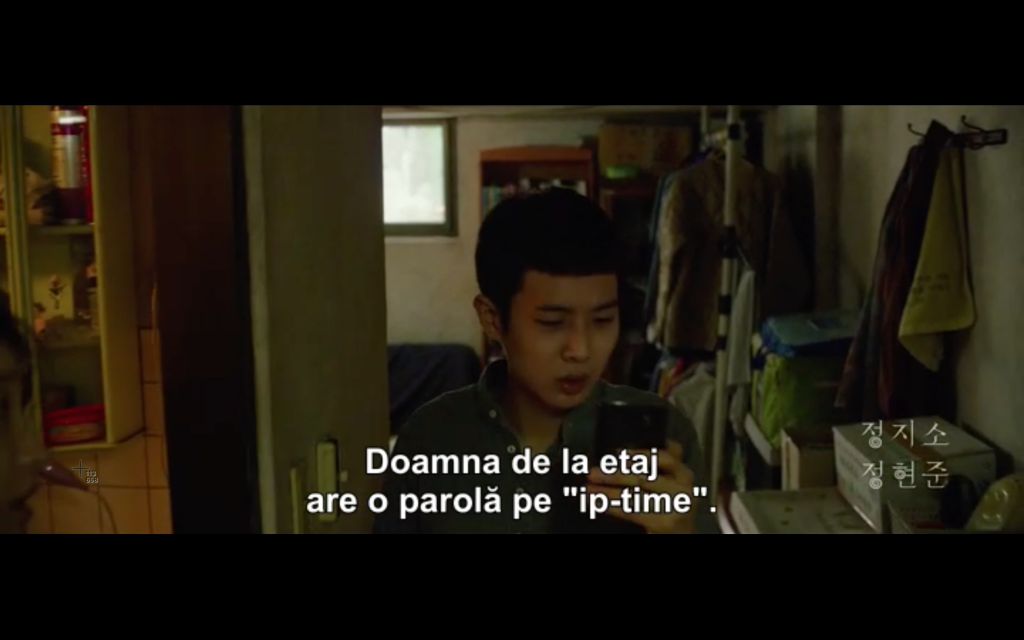
“The lady above us has a password on IP-TIME.
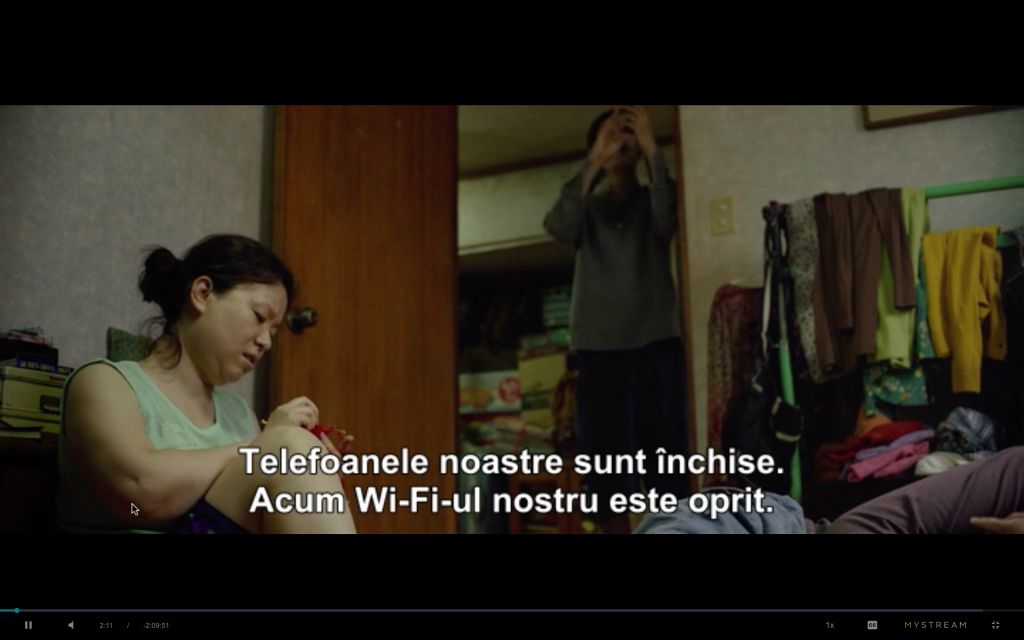


4. PARASITE —THE DISINSECTION SCENE.
Leaving the windows open for the street-cleaning-fumigation to enter the semi-basement apartment so they get “free disinsection”. The guy doing the fumigation wearing a mask for protection, while the family receiving the smoke as a free privilege is another strong message.


5. THE PIZZA BOXES SCENE —THE BRAND DISCREPANCY.
The concern of the pizza-delivery lady for the brand-image that might be affected by folded boxes that were messed up creates an entire paradox while the problem is presented through the context of the image perception and the people behind the brand’s package.
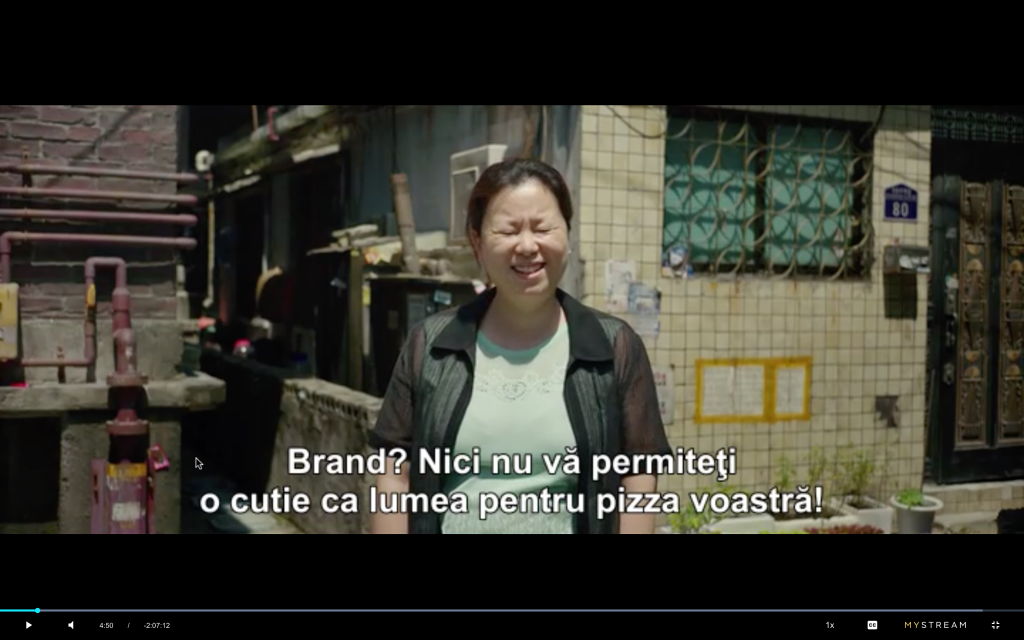
6. THE RICH & SUPERFICIAL CLICHE





7. LINES & BORDERS TO HIGHLIGHT THE SOCIAL-GAP BETWEEN THE RICH AND THE POOR.
Lines and limits are probably the main leitmotif of the movie reinforcing the social-gap between classes and the unwritten of society.



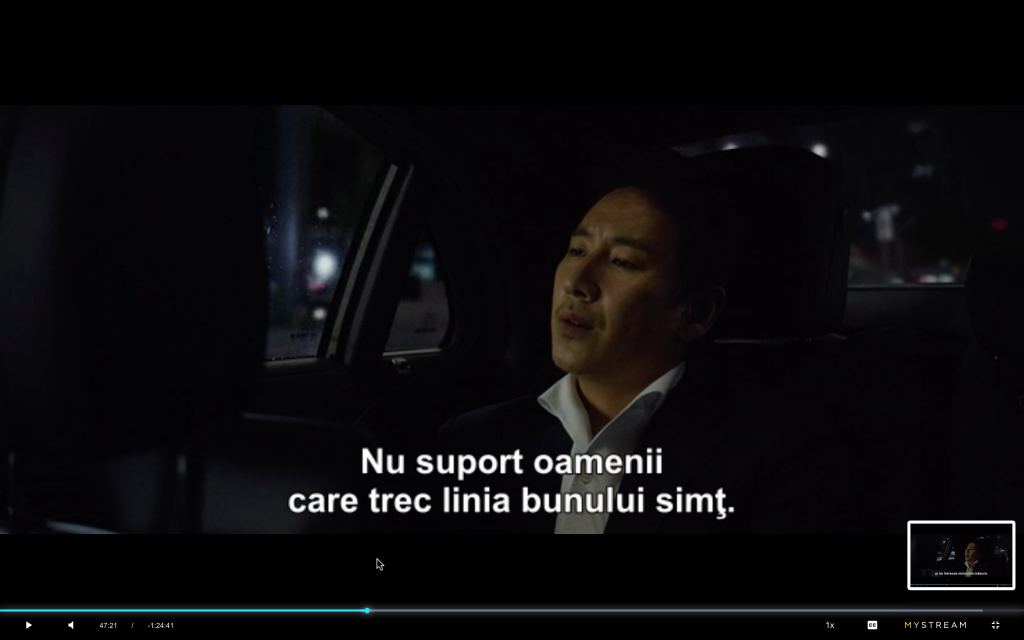







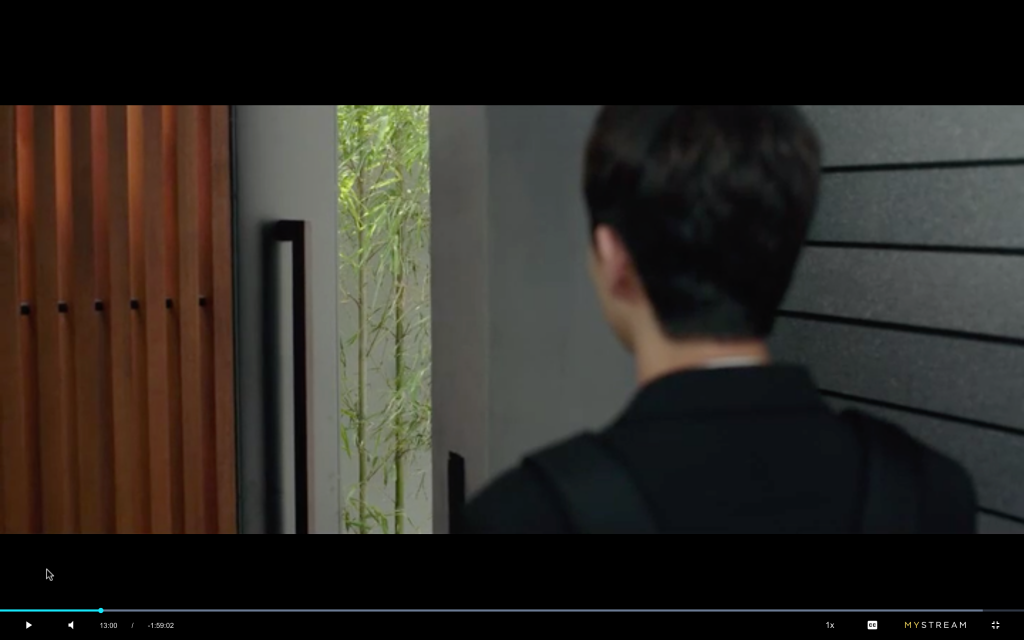
8. STAIRS TO HIGHLIGHT THE SOCIETY’S LAYERS
There are 6 stages of stairs:
- Stage 1: The stairs to the Kim Family semi-basement apartment.
- Stage 2: The stairs to enter the yard of Park’s family.
- Stage 3: The stairs to enter the home of Park’s family.
- Stage 4: The stairs to the kids’ rooms.
- Stage 5: The stairs back-down to the Park’s family basement / the deposit.
- Stage 6: The stairs in the Park’s family that lead to the bunker. The underground home of the maid’s husband is portraiting the rock-bottom society, parasite of the parasites. The metaphor is well presented in the first dialogue between the new and the old servant family. The whole scene reflects how the society layers are strong, even among the poor.
There is one particular line that shows Mr. Kim’s disgust towards the bunker and the conditions the other one is living in, outlining the bold discrepancy between his perception and the actual difference with his own reality.
9. THE PAINTING – THE PERCEPTION of REALITY SEEN BY DIFFERENT SOCIAL CLASSES.

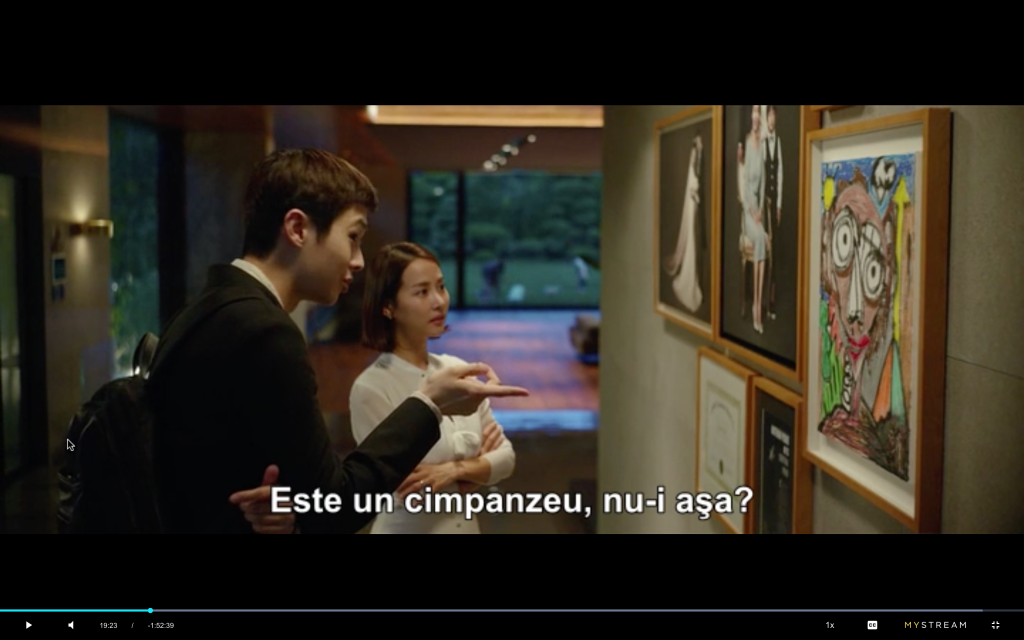

Kevin sees the painting portraiting a chimpanzee, Madame sees it as a self-portrait, when the reality is that the painting represents Da-song’s trauma related to his experience when he saw the man living in the family’s bunker.

The distorted perception of reality and the laws by which their realities are governed by are reinforced in the scene with Kevin reading Da-hye’s journal.
10. THE PARASITE PARADOX.
There is a powerful scene in the car, where Mr. Park is picturing how his family’s life will look without a maid: Dirty clothes, no good food and their home transforming into a garbage can. The discussion is underlining the inter-dependent relationship between the social classes: none could live without the other. The idea of being a parasite applies here both ways, depending on their mutual needs: service & money.



The idea is reinforced by the light in the house provided by those who live underground. (The man in the bunker hitting his head against the electricity button leads into light provided for the wealthy.)
11. THE SMELL TRANSLATED INTO POVERTY.





12. THE MISFIT CROSSING THE LINE
Another powerful analogy is Jessica’s role, as Mr. Kim’s daughter and the misfit of the family. Jessica proofs to fit more in the rich reality than her other peers. The message is encrypted in the dynamic she has with the other characters:
- Her superior attitude towards her mom in the Park’s home;
- Her brother’s perception of her fitting the wealthy setup.
- Her firm decision to keep Madame out of her class, unlike her brother who is obedient and does what he’s told.
- …and in the end, Madame’s decision to choose her to be the one who delivers the symbolic cake to Da-sung for his birthday. (The gesture is the final act of Da-sung’s transition over his traumas and Jessica’s transcendence above her social class).
The whole scene construction builds-up and reaches the peak when the mad-man stabs her to death. The whole scene can portrait the metaphor of the consequences that follow to crossing the social-class borderline (The cake delivery).




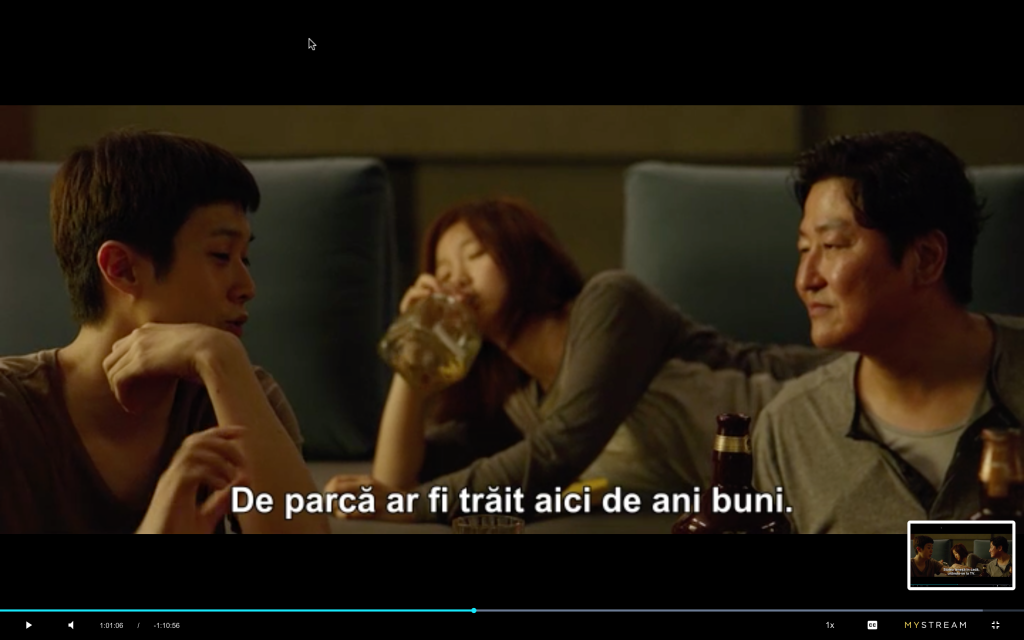
13. THE PARASITE CIRCUIT.
There are two incredible scenes at the beginning and at by end of the movie that are connected.
- The first one: Jessica asking her father if he worked as a valet. Mr. Kim confirms and adds that he did after his job at the cake store in Taiwan that went bankrupt.
- The second scene: The story and the message behind make sense by the end of the movie when the man in the bunker proofs to be Mr. Kim’s ex-boss from the Taiwan cake store.




14. 1st CLASS PRIORITY
The end scene is closing the circuit with a powerful message with Park screaming to get the keys from Kim so he can take their unwounded fainted son at the hospital, despite the fact that Kin’s daughter, Jessica, was bleeding to death. The lack of care and empathy was enhanced by Park’s gesture of holding his nose due to the smell coming from the mad one on the grass, while picking up the keys underneath him.
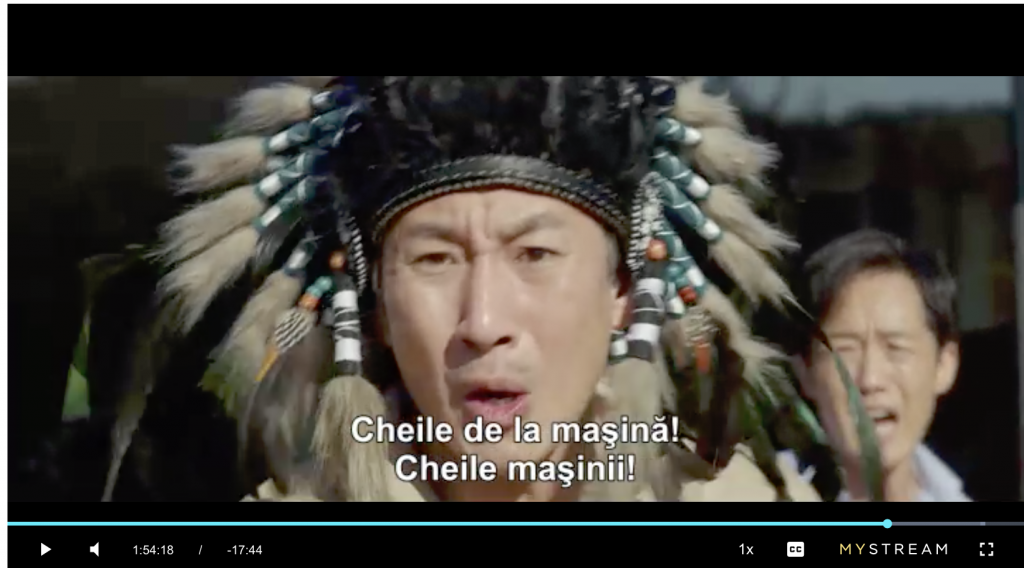


15. It’s all about HAVING A PLAN.
The movie has frequent insertions with the idea of having a plan being presented as a redemption solution to the poor’s desire for transcendence. The family returns to their metaphorical purgatory in the scene after the flood, where Kim’s telling Kevin that the best plan that never fails is not having one.
The scene is representative for the poor’s Sisyphean Struggle to breakthrough their condition.




The movie’s last shot is portraited in a fantasy: father and son hugging on the light, green lawn of the Park house, that is now theirs. We return to the half-basement where the movie starts. Kevin’s desire to continue striving to transcend his condition is Sisyphean. Hope is here the emotional parasite of the story: it keeps them moving forward and striving, while at the same time, it drains them out of strength.
